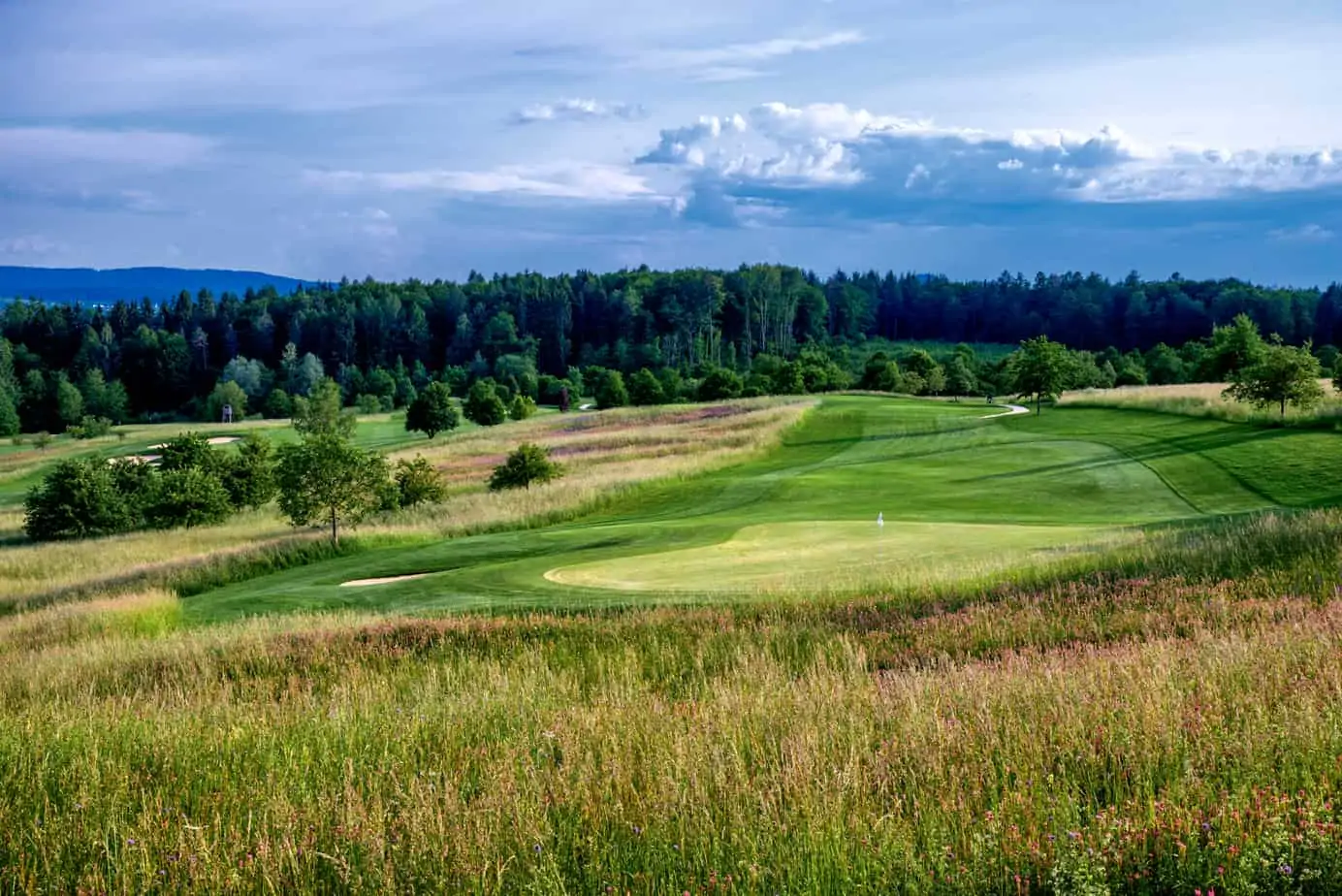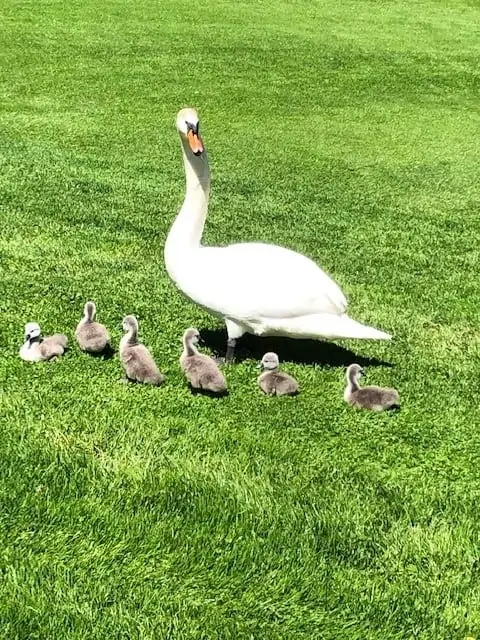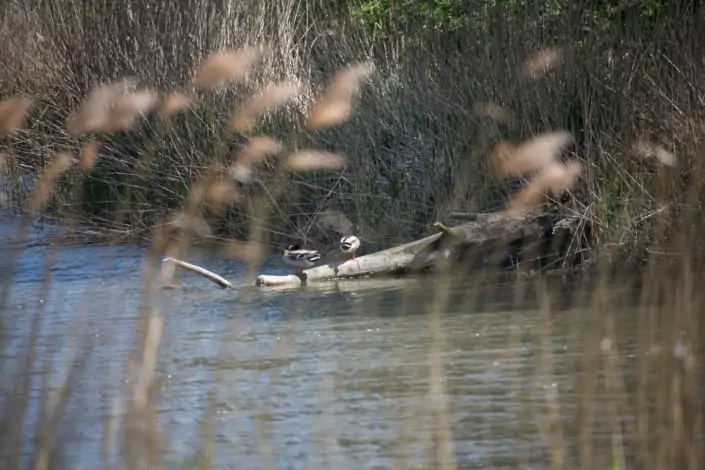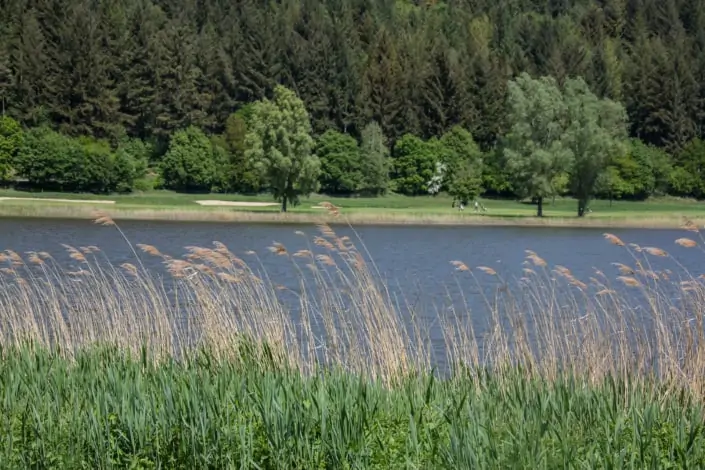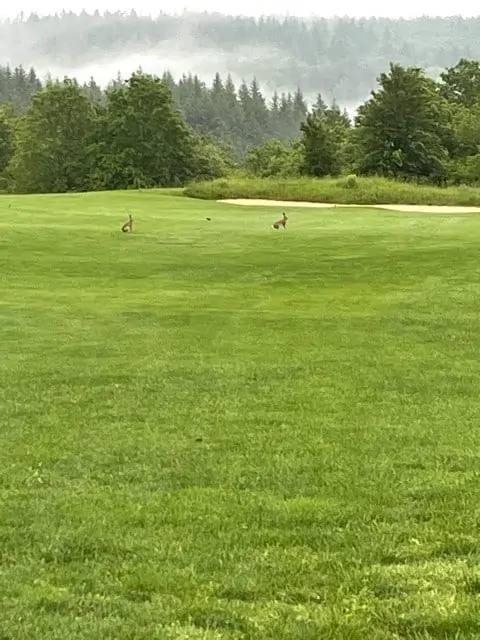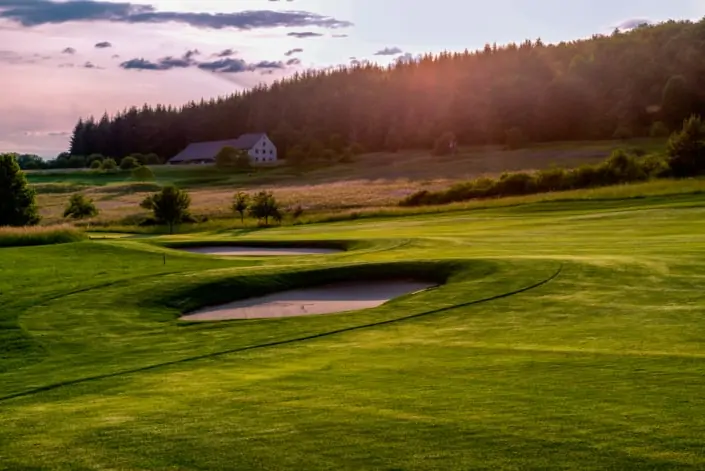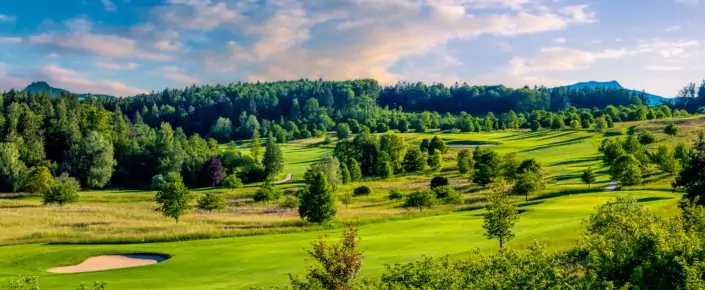CC Schloss Langenstein: Water management as main topic
Actually, there is abundance here in a positive sense: there are plenty of natural landscape elements on this site. Tranquillity in nature is an element that particularly characterizes the grounds of Country Club Schloss Langenstein. On an area of 100 hectares for only 18 lanes and a small short course, there is still plenty of room for meadows, water and natural structures.
“We got fully involved in the topic of nature,” explain club manager Colin Piltner and environmental officer Prof. Dr. Moritz Wente in unison. Participation in the Baden-Württemberg Golf Association’s ” Habitat Golf Course ” campaign was a matter of course, after you’ve already been certified with silver in the “Golf and Nature” program of the German Golf Association “and the plans for gold are already underway.”
“Away from Augusta Syndrome”
Two essential aspects characterize the current projects of the golf course near Lake Constance at the moment: “We are getting away from the Augusta syndrome of the evergreen golf course,” explains Piltner. The issue of water management also plays a decisive role here. On the other hand, the topic of communication is on the agenda. “We have to pick up the golfers much more on issues such as biodiversity,” Wente sums up.
On an extensive course like that of CC Schloss Langenstein, the golfer already has a basic understanding of the natural environment. A round of golf is characterized by an unspoilt area that offers a habitat for numerous rare animal and plant species. “Now, for example, we are concerned with making young people aware of everything we have here at the facility,” explains Wente. Within the framework of youth tournaments or summer camps, flying visits to the deadwood areas, identification of bird species or a guided tour through the wildflower meadows should play a role.
What applies to young people also applies to adults: like everywhere else, the issue of hard rough is a point where the aforementioned “Augusta Syndrome” comes into play, as it does on every other golf course in Germany. On the one hand there is the golfer with his frequent call for a playing surface that is as clean as possible, on the other hand the challenge of offering a golf course that has wild flowers, nutrient-poor grassland, space for insects or other things on areas that are not directly used for playing animals offers. Visual stimuli also play a role here: The fact that purely mowed areas often only offer monotonous green and cannot keep up optically with the contours that create lean rough areas is a finding in Langenstein Castle in recent years.

